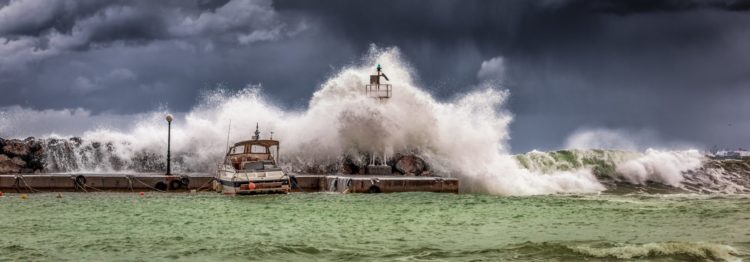SIREN

Shipping Resilience: Strategic Planning for Coastal Community Resilience to Marine Transportation Risk
Context, objectives and scope
Many coastal communities across Canada are highly dependent upon maritime transportation systems that are vulnerable in natural disasters. This project aims to improve understanding of how coastal maritime transportation systems would be disrupted in natural hazard events, how such disruption would impact coastal communities, and what strategies could effectively address this risk.
Ports across Canada are vulnerable in natural disasters, and their disruption can pose severe consequences for marine transportation systems and the coastal communities that rely on them. This project aims to improve understanding of how different types of ports may be affected in hazard events, with focus on catastrophic earthquake risk in coastal British Columbia, and consideration of severe hurricane damage to ports in Eastern Canada.
Focusing on the movement of people and goods in the emergency response phase of a disaster, the research team develops new tools, information, and risk assessments to support preparedness planning by local and provincial governments and the transportation sector. Through iterative engagement with stakeholders, the research is also intended to foster dialogue and shared understandings of risk that are necessary for resilience planning.
The research consists of an interrelated set of activities, as shown in the diagram:
- Organization of workshops for engaging government and transport sector stakeholders.
- Development of a framework for assessing community resilience to shipping and port disruption.
- Development of a model and simulation tool for the coastal maritime transportation system and regional multimodal logistics system.
- Development of a simulation model for port operations and vulnerabilities to natural hazards.
- Development of an approach for evaluating the effectiveness of the modelling approach.

Research questions
- How would a major disaster likely affect marine transportation routes?
- How would this marine transportation disruption affect the movement of people and resources in the emergency response phase?
- What strategies (e.g., alternate routes and/or transport modes) would be effective for different types of communities in alleviating the potential consequences?
- Will a port be available, and in what state, after a natural hazard event, considering its own vulnerability and the vulnerability of interdependent infrastructure (e.g., road access, electric power)?
- Based on expected states, what ports could be used for ingress and egress of populations and resources during the immediate and sustained response phases of a catastrophic disaster?
What strategies would be effective for different types of ports to reduce failure risk or improve functional resilience?
